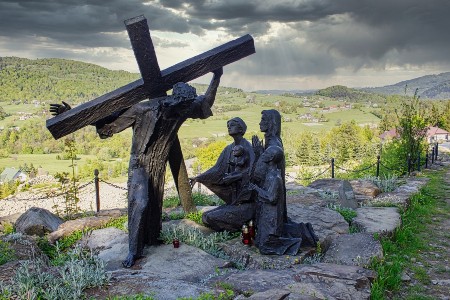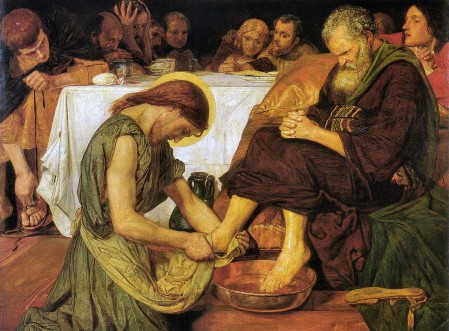 Dear readers, Catholic Online was de-platformed by Shopify for our pro-life beliefs. They shut down our Catholic Online, Catholic Online School, Prayer Candles, and Catholic Online Learning Resources—essential faith tools serving over 1.4 million students and millions of families worldwide. Our founders, now in their 70's, just gave their entire life savings to protect this mission. But fewer than 2% of readers donate. If everyone gave just $5, the cost of a coffee, we could rebuild stronger and keep Catholic education free for all. Stand with us in faith. Thank you. Help Now >
Dear readers, Catholic Online was de-platformed by Shopify for our pro-life beliefs. They shut down our Catholic Online, Catholic Online School, Prayer Candles, and Catholic Online Learning Resources—essential faith tools serving over 1.4 million students and millions of families worldwide. Our founders, now in their 70's, just gave their entire life savings to protect this mission. But fewer than 2% of readers donate. If everyone gave just $5, the cost of a coffee, we could rebuild stronger and keep Catholic education free for all. Stand with us in faith. Thank you. Help Now >
Ashes
FREE Catholic Classes
It is not easy to arrive at the fundamental conception of the liturgical use of ashes. No doubt our Christian ritual has been borrowed from the practice of the Jews, a practice retained in certain details of synagogue ceremonial to this day, but the Jewish custom itself needs explanation. A number of passages in the Old Testament connect ashes ( efer ) with mourning, and we are told that the mourner sat or rolled himself in, sprinkled his head or mingled his food with, "ashes", but it is not clear whether in these passages we ought not rather to translate efer as dust. The same phrases are used with the word afar which certainly means dust. It may be that the dust was originally taken from the grave, in token that the living felt himself one with the dead, or it may be that humiliation and the neglect of personal cleanliness constituted the dominant idea ; for a similar manifestation of grief was undoubtedly familiar among Aryan peoples, e.g. in Homer (Iliad, XVIII, 23). It seems less probable that the cleansing properties of ashes (though this also has been proposed) are taken as significant of moral purification. The chief foundation for this last suggestion is the Rite of the Red Heifer ( Numbers 19:17 ) in which the ashes of the victim when mixed with water had the ceremonial efficacy of purifying the unclean (cf. Hebrews 9:13 ). Be this as it may,
Join the Movement
When you sign up below, you don't just join an email list - you're joining an entire movement for Free world class Catholic education.
-

-
Mysteries of the Rosary
-
St. Faustina Kowalska
-
Litany of the Blessed Virgin Mary
-
Saint of the Day for Wednesday, Oct 4th, 2023
-
Popular Saints
-
St. Francis of Assisi
-
Bible
-
Female / Women Saints
-
7 Morning Prayers you need to get your day started with God
-
Litany of the Blessed Virgin Mary
Daily Catholic
 Daily Readings for Thursday, November 21, 2024
Daily Readings for Thursday, November 21, 2024 St. Gelasius: Saint of the Day for Thursday, November 21, 2024
St. Gelasius: Saint of the Day for Thursday, November 21, 2024 Act of Consecration to the Holy Spirit: Prayer of the Day for Thursday, November 21, 2024
Act of Consecration to the Holy Spirit: Prayer of the Day for Thursday, November 21, 2024- Daily Readings for Wednesday, November 20, 2024
- St. Edmund Rich: Saint of the Day for Wednesday, November 20, 2024
- Act of Adoration: Prayer of the Day for Wednesday, November 20, 2024
![]()
Copyright 2024 Catholic Online. All materials contained on this site, whether written, audible or visual are the exclusive property of Catholic Online and are protected under U.S. and International copyright laws, © Copyright 2024 Catholic Online. Any unauthorized use, without prior written consent of Catholic Online is strictly forbidden and prohibited.
Catholic Online is a Project of Your Catholic Voice Foundation, a Not-for-Profit Corporation. Your Catholic Voice Foundation has been granted a recognition of tax exemption under Section 501(c)(3) of the Internal Revenue Code. Federal Tax Identification Number: 81-0596847. Your gift is tax-deductible as allowed by law.






 Daily Readings for Thursday, November 21, 2024
Daily Readings for Thursday, November 21, 2024 St. Gelasius: Saint of the Day for Thursday, November 21, 2024
St. Gelasius: Saint of the Day for Thursday, November 21, 2024 Act of Consecration to the Holy Spirit: Prayer of the Day for Thursday, November 21, 2024
Act of Consecration to the Holy Spirit: Prayer of the Day for Thursday, November 21, 2024

